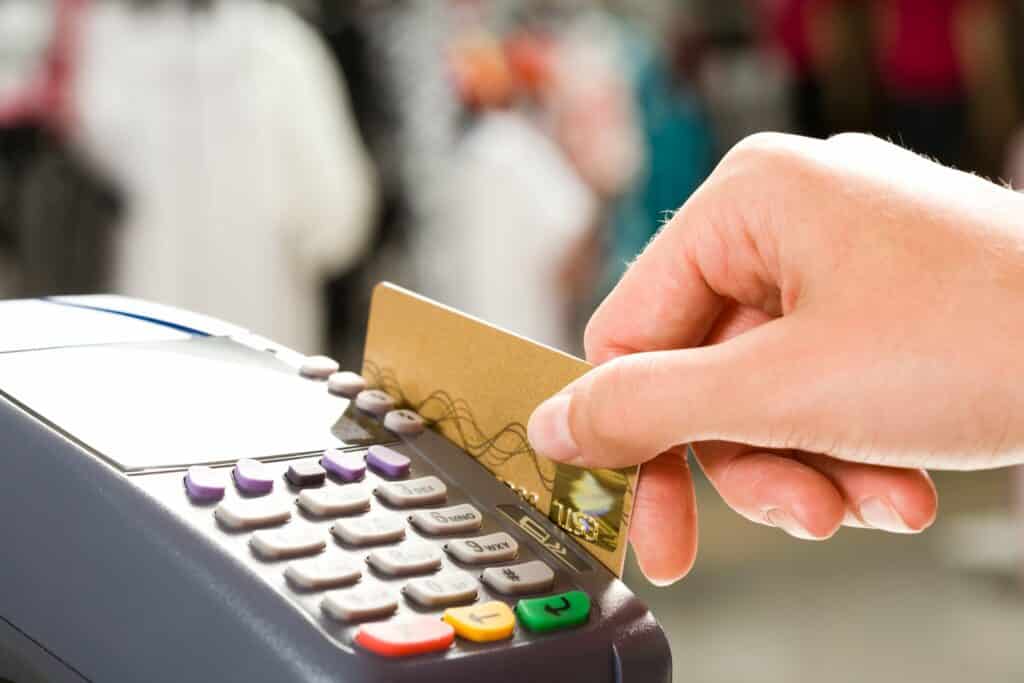Denied by Major Credit Card Issuers? Consider Starting With a Retail Card.
Too many young people and others new to credit think that applying for a credit card from a major bank (e.g. Citi, Chase, American Express, etc.) is the best way to build their credit. Almost immediately, they receive notification that their application has been denied because they lack the sufficient credit history to qualify. This logically feels like a catch-22 situation, where you have to have credit to get credit, but you can’t get credit unless you already have it.
What is the best way to start building your credit?
Some of the easiest ways to begin building your credit without having to pay interest or annual fees involve applying for retail cards (also known as store cards) with many well-known online, clothing, fuel, and other consumer goods retailers.
Not everyone is in the financial position or mindset to start building their credit rating. Please see our 4-part checklist for knowing if you’re ready to start using credit. If you feel ready, then read on for your next steps.
Easy Credit Does Not Mean It’s a Good Idea or Smart Move
While the following retailers tend to offer store cards with easier qualification requirements than most, their lower credit standards often mean consumers end up paying high-interest rates or higher product prices. Be sure to read below to understand the downsides of applying for retail credit accounts. While this list is presented in order of ease of qualification, we present it as our opinion only, based on our decades of experience working with consumers as professional counselors and educators.
-
TJ Maxx (also used at Marshalls, HomeGoods, Sierra, and HomeSense)
-
Old Navy (also used at GAP, Banana Republic, and Athleta)
-
Regional Tire Shops or Furniture Stores
Rewards with a Potentially Huge Downside
Why would a retail store give you a 10% to 15% discount on your purchase for using their credit card? They aren’t charities, after all, and many work on very thin profit margins, meaning discounts can create a loss rather than a profit.
The answer is simple, actually. Retailers encourage consumers to use their store cards because retailers know a large percentage of consumers will not pay off their balances each month. This means the stores begin earning interest off their customers, and they don’t have to pay dock workers, higher cashiers, or rent expensive retail space.
Easy Retail Cards Come with High-Interest Rates
Unfortunately for the ill-prepared consumer with a new store card, they walk out the door thinking they just “saved” money on their purchase but quickly forget about their new debt (such is human nature). Three weeks later, they receive their first account statement from the store’s credit department, look at their balance, and realize they haven’t put aside any money to pay off their balance.
The consumer then scrapes together enough to make the minimum payment, which means only a couple of dollars of their payment will go toward lowering their balance. The rest goes to the store as profit in the form of interest. Most retail store cards carry interest rates in the 24% to 30% range.
Now, the consumer is stuck in the minimum payment debt cycle. Each month, they get a small discount on their purchases but send a huge chunk of change to the store in interest payments.
Retail Store Cards Limit You to Buying Products Often Priced Higher than at Other Stores
Stoneberry and Fingerhut both advertise their credit for those with bad credit or no credit. Anytime you see such a disclaimer in an ad, you can bet that the interest rates on any approved account will be sky-high. To get an idea of how these online retailers and their credit cards work, see our post that reviews such claims by Fingerhut.
Prices at these sites can be particularly shocking. As noted in our Fingerhut post in 2021, the Fingerhut sales price of a TV was still 33% more than the regular price of the exact same TV at Target.
Because these sites focus their marketing on monthly payments, they can avoid the uncomfortable conversations around their high-interest rates and their high retail prices.
Consequently, even though easy to qualify for, you should think twice, three times, or more about starting your credit-building activities here.
Where You Can Use the Retail Card or Line of Credit
Retail cards differ from credit cards in that you can only use them at stores owned by the company that issues them. Stoneberry and Fingerhut cards can only be used on their online markets, which tend to sell items, as noted above, that cost much more than similar items sold in local stores or on Amazon.
Some cards, like the TJ Maxx or the Old Navy cards, can be used at other stores owned by the same company. However, you can’t use a JC Penney card, for example, at a Ross Dress-for-Less or use a Target REDcard at a Walmart.
If you plan to purchase something from one of these stores anyway, regardless of whether you have a retail card with the company, then using their credit might make sense. However, look at our suggestion at the end of this post on how you should ALWAYS leave the store with NO balance on your accounts.
Six Months of Activity to Build Your Credit
Regardless of which account you choose to apply for, once approved, you will generally need six months of responsible credit activities for it to start improving your credit. That usually means that you will need to make a purchase each month. We would suggest you keep the purchase small and that you pay it off immediately.
None of FICO’s 130+ scoring factors has anything to do with how large your purchases are. That means you might purchase a $5 pair of socks at Kohl’s and build your credit just as much as if you spent $2,000 on a TV at Stoneberry and paid it off with your next statement.
Pay Off Your Store Card Balance Before Leaving the Store
Anyone new to credit building may not realize how easily and quickly a consumer can forget any balance they have on their credit accounts. Once you’re away from the store and retail environment, your mind goes to other things, not to your debts.
It’s not until you receive the monthly statement that human nature finally tries to figure out how to pay your bills. Unfortunately, by then, it may be too late because most people are living paycheck-to-paycheck and can barely afford to make the minimum payment.
Repay Store Card Debts in the Store the Same Day
That’s why we recommend you pay off your balance before you EVER leave the store after making a purchase. For most retail stores, you can pay off your bill immediately at their customer service desk (usually at the back of the store).
Even if you just barely opened your account, take your receipt and new account information directly to the customer service desk and either write them a check or pay off the balance with cash or your debit card. Then, you can walk out of the store with the wonderful feeling of just having saved 10% to 15% on your purchase and also owing $0 to that store.
Some stores make it even easier to pay off your new card balance. At JC Penney, for example, you can make the purchase at any cashier and then immediately pay off the balance at the same cashier. Just picture how clever you will appear for getting a 10% or 15% discount by using your new store card and then paying it off in full. Sounds like a move millionaires would make.
Pay off Your Retail Card Balance Online as Soon as the Purchase Posts
For online retail stores or perhaps the regional tire shop where you just got approved for a line of credit, you may not be able to pay off the debt immediately. Sometimes you will need to wait a day or so until the purchase posts to your new account.
Still, if you use these online or regional store credit accounts, go online immediately (while still in your chair or in the parking lot), register for your new online account, and set up your payment. You will typically need to enter your bank’s or credit union’s routing number and your account number. If the purchase has already been posted, make the payment right then and there. Otherwise, if it shows as pending, schedule a payment to go through the next business day.
How to Build Your Credit with Installment Loans
If you have used a regional tire or brake shop to start your credit building, you might consider the best way to get six months’ worth of payments on your credit history. If you pay it all off immediately, you only have one month’s worth of activity. It takes six months of payments to really make a difference with your credit.
You might consider setting up payment the same day you take out the loan or line of credit that will pay off all but $50 or so of the balance. Then, each month for the next six months, you will make a $10 to $15 payment until it’s paid in full. This way, you will minimize the interest you pay on the full balance, only getting charged interest on the smaller $50 balance. At 25% APR, that might equate to $10 to $15 of interest paid over six months.
Related Questions
Does it matter where to start if I have no credit or bad credit?
You can rebuild your credit history in the same way you can build your credit from scratch. You can use these same retailers to qualify for an account to use responsibly for at least six months. If you have poor credit, you should also focus on fixing any current accounts reporting late payments.
What’s your credit score if you have never had credit before?
If you have never had or even applied for a credit account or loan before, you will have no credit score at all. You don’t have a 0 score because you have no credit history from which to generate a credit rating. Once you qualify for a credit card, retail card, or loan and make payments for six months, you can expect your credit rating to start around the low- to mid-600s out of a range of 300-850.
Related Articles








